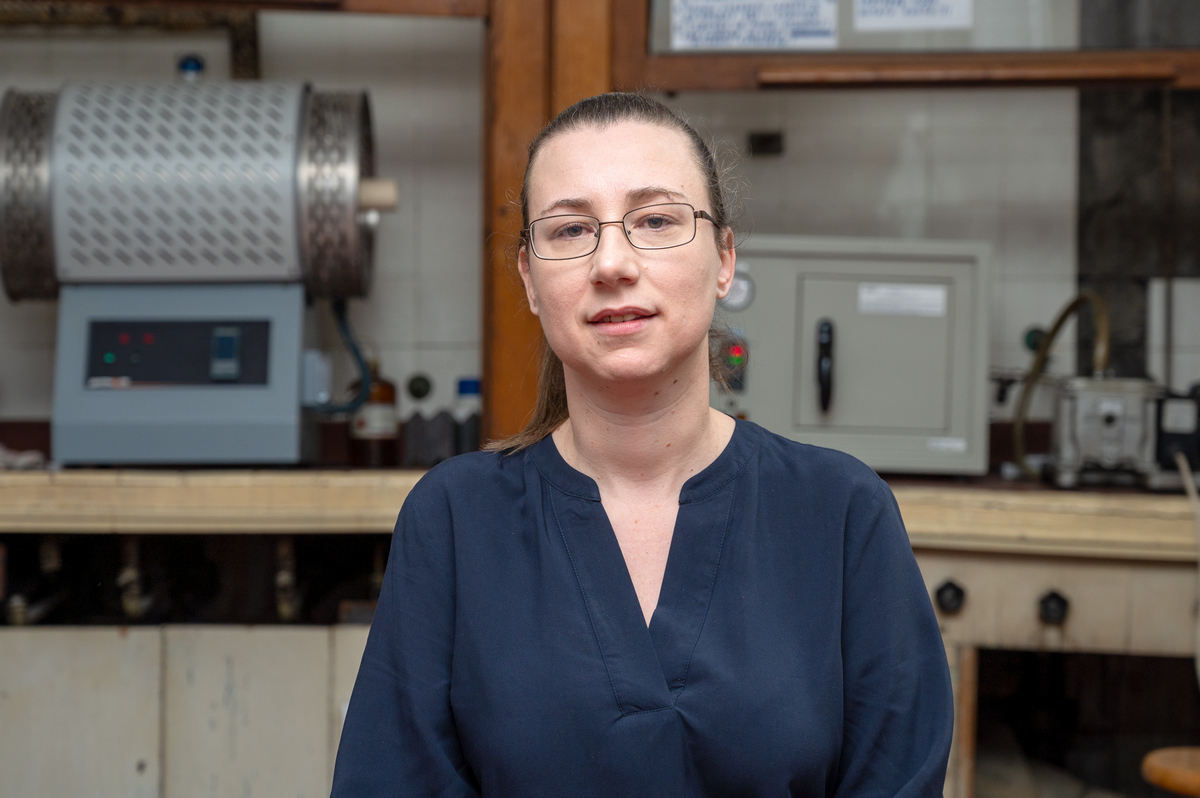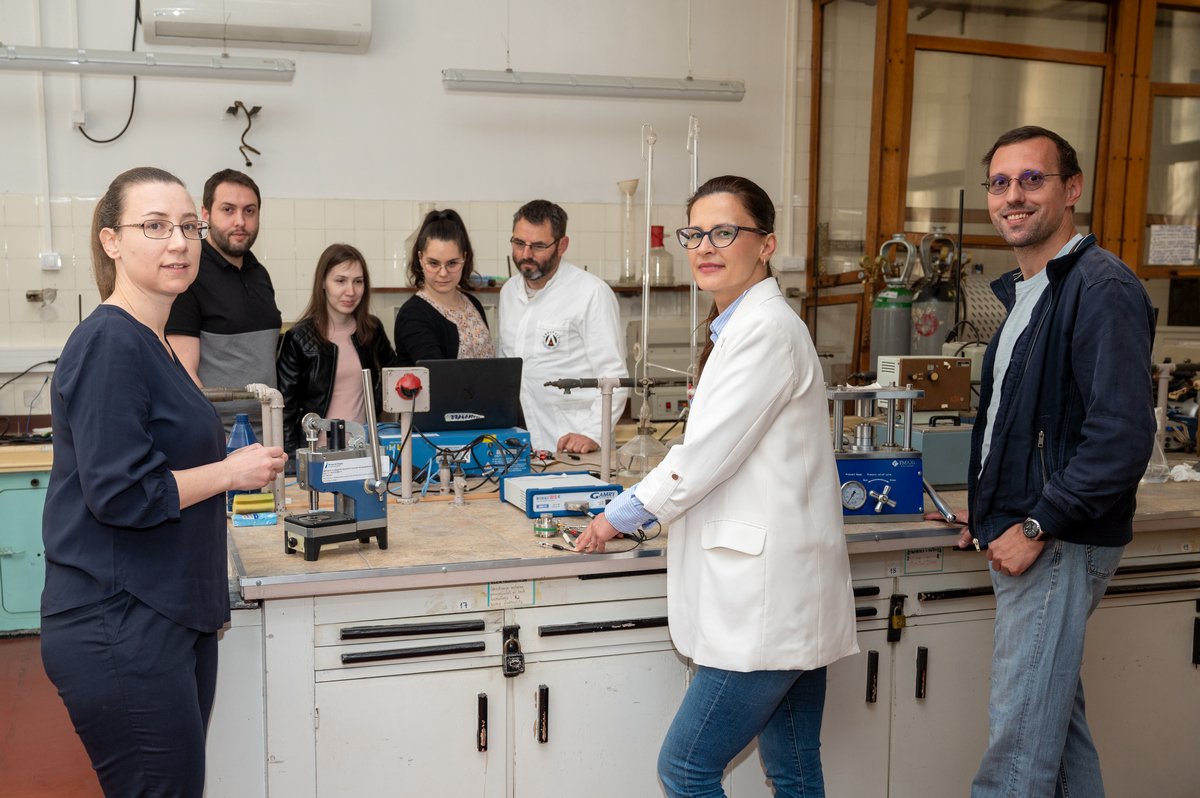Project Title
High-capacity electrodes for charging of water, multivalent ionium battery and supercondensators: the next step towards the hybrid model
Article Author and Principal Investigator of the project:
Dr. Milica Vujković
Principal Research fellow, University of Belgrade – Faculty of Physical Chemistry

A two-year HiSuperBat project implemented by six young researchers employed at three scientific research institutions, was directed towards developing new generation battery materials with no lithium, and which would be based on available elements such as calcium, magnesium and or aluminum. The idea of the project came about as a result of several years of research in the area of energy storage.
HiSuperBat has brought new fundamental and practical knowledge in the field of energy storage that have been published in 12 international scientific publications and presented at 18 conferences. During the project, we have developed materials that have a large and stable capacity for storing calcium and aluminum ions and therefore also possess a significant potential to be applied in the aluminum-ion supercapacitors and calcium-ion batteries. This has been achieved through the development of simple methods of synthesis that include carbonization of waste biomass and sol-gel procedure.
Project developed a new type of supercapacitor, based on aluminum ions and aqueous electrolyte, with workable voltage of 1.5 V, which is 0.5 V more than the classical aqueous supercapacitor offers. Its application can cover a broad spectrum of devices that are used in everyday life including LED lamps, hand watches, wireless headphones, wireless mice, keyboards, remote controls etc. It can also be used in sensor-based devices, for voltage stabilization, small and portable medical devices (pulse oximeters, sphygmomanometers) and such. In these applications, the super capacitor can be used for enabling quick charge, when necessary, in cases of short-duration mistakes in voltage or for extending the time of usage or extending one battery charge.
In addition to that, a high-capacity, 1.5 V coin-type calcium-ion battery cell has been developed and it is based on an innovative concept of hybridization of the super capacitor carbon anode and battery oxide cathode in one cell unit. Such battery system could also be applied in devices for which not much energy is needed like watches, hearing aids, car keys, toys, calculators, sphygmomanometers and similar. The benefits of such cell are the absence of expensive and problematic metal lithium found in modern coin cell batteries, the use of ecological aqueous electrolyte instead of expensive and ignitable organic electrolyte that would reduce the price of battery and simplify its production. However, before these models of capacitor and battery cell can be applied, it is necessary to conduct further experiments in optimizing all the cell components (from the industrial point of view) and ensuring reproductivity of the electrode materials synthesis on a large scale.
For more demanding large-scale energy storage applications, developed materials could be applied by industrial procedure on larger surface areas of current collectors (both anode and cathode), which would be twisted in a spiral way so that they form cell units of cylinDr.ic or prism shape. Battery cells constructed in such a fashion could, hypothetically speaking, be connected regularly and parallelly in large numbers creating “battery blocks”, that would have potential to replace the lead accumulators or nickel-cadmium water systems as well as be applied in the stationary systems for storing renewable energy where the price and safety are more important than mass and energy. This would result in a system that is ecologically more acceptable, simpler to make and independent of critical components such as lithium. Because of that, project activities and results obtained are of great importance because they can contribute to solving one of the most important issues of modern society which is the pollution of the environment and reduction of CO2 emissions.
The methodology of investigation of the developed materials/systems was mostly based on the application of physiochemical methods of characterization of synthesized materials and electrochemical methods of testing of battery/capacitor systems related to the coulombic capacitance, its stability during repetitive charge/discharge and working voltage. Thanks to the means obtained by the Science Fund of the Republic of Serbia we have obtained the necessary equipment for constructing and testing cells such as tools for making and pressing circular electrodes, different forms of cells for testing materials and two modern potentiostat devices for testing energy storage systems. This made possible for one young team to organize its work around a very important topic and successfully sees through the activities planned which also created a platform for further progress in this research field.
Through participation at international conferences important contacts have been made with research communities in the region and in Europe which contributed to the spreading of contact networks within the academic community and strengthening of our professional and personal development. I would like to stress that we have also organized a symposium called COIN2022 which took place at the Serbian Academy of Sciences and Arts. This was a joint activity with Montenegro and Slovenia, and it was supported by the Science Fund. This event made it possible for the Serbian scientific community not only to familiarize itself with the challenges and successes in the field of storage of energy in Europe but also to present its results and exchange the experience with well-known names of global science in this field. This also brought about my connections with some of the foremost experts in the field which opened doors to my engagement as lecturer at important battery themed conferences in Europe.
Finally, but not least, results of this project have opened new possibilities and ideas for future national and international project calls, and they have also identified problems which require further investigation. This is not just a finished project; it is a point of inception for further investigation and development in this field.
Program
Program for excellent projects of young researchers – PROMIS
Project Budget:
EUR 180,689
Scientific and Research Organizations:
- University of Belgrade – Faculty of Physical Chemistry
- Vinča Nuclear Research Institute, University of Belgrade
- Institute of Technical Sciences of SASA
Project Team Members:
- Dr. Nikola Zdolšek, Associate, Vinča Nuclear Research Institute, University of Belgrade
- Dr. Milica Vasić, Senior Research Associate, University of Belgrade – Faculty of Physical Chemistry
- Dr. Miloš Milović, Senior Research Associate, Institute of Technical Sciences of SASA
- Dr. MioDr.ag Lukić, Research Associate, (8/6/2020.-5/6/2021), Institute of Technical Sciences of SASA
- Dr. Maja Kuzmanović, Research Associate (5/6/2021. – 12/31/2022), Institute of Technical Sciences of SASA
- Dušan Mladenović, Research Assistant University of Belgrade – Faculty of Physical Chemistry
